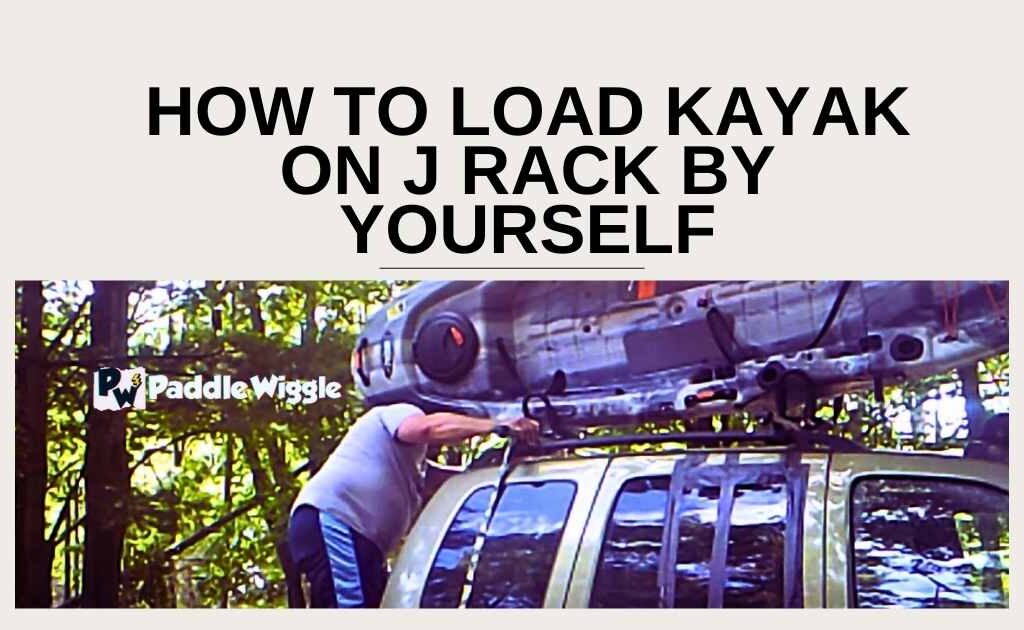Anchoring a kayak is a fundamental skill that allows paddlers to stabilize their vessels and maintain their position in various water conditions. Whether you’re fishing, taking a break, or simply enjoying the scenery, anchoring can enhance your kayaking experience.
If you’re looking for a way to enhance stability and control of the water, then look no further. In this guide, we’ll show you how to anchor a kayak like a pro. From the very first step to Mistakes to avoid, we’ll cover everything you need to know. So, let’s dive in and learn how to anchor a kayak like a seasoned pro.
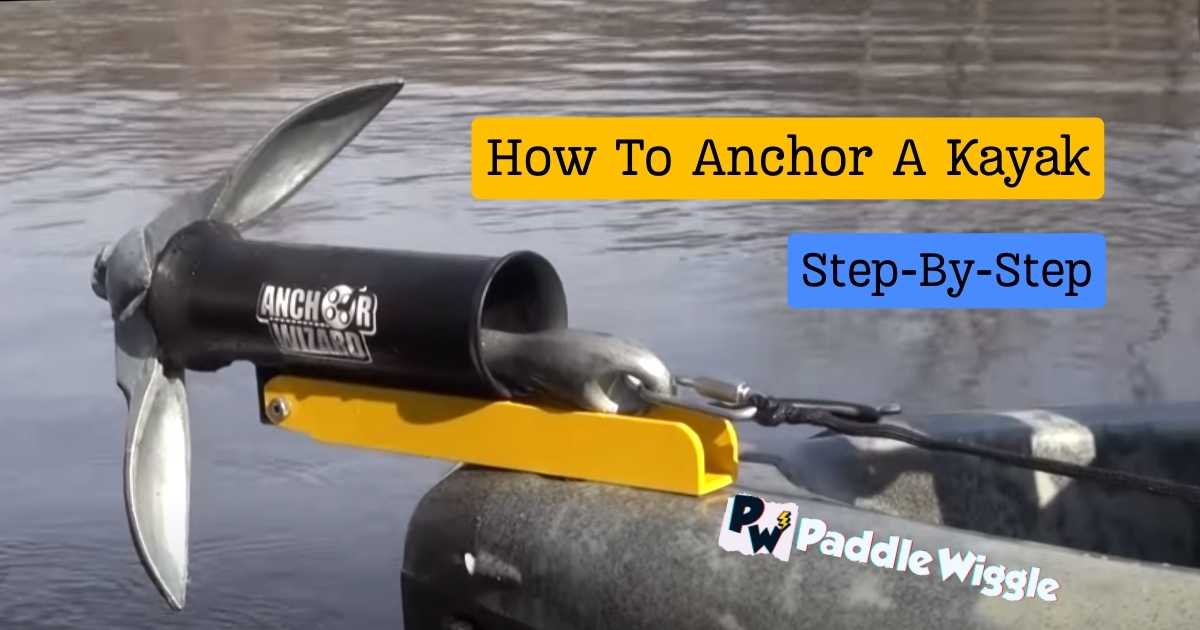

In this guide
Anchoring A Kayak
Anchoring a kayak means using an anchor to keep it still in the water. People do this to stay in one spot for fishing, taking a break, or just enjoying the view. It stops the kayak from moving around with the wind or current, giving paddlers more control and letting them relax without paddling all the time.
When to Anchor a Kayak
Knowing when to anchor a kayak is crucial for maximizing safety, convenience, and enjoyment on the water. Anchoring can be beneficial in several scenarios, providing stability and control in various conditions.
Here are a few scenarios where a kayaker might want to anchor his kayak:
- Fishing: Anchoring is often used by anglers to maintain position while fishing in a particular spot. It allows them to focus on casting and reeling in fish without being carried away by currents or wind.
- Taking Breaks: Kayakers may anchor their kayak when taking breaks to rest, hydrate, or enjoy a snack. Anchoring provides a stable platform for relaxation without the need to constantly paddle to stay in place.
- Enjoying Scenery: Anchoring can also be used to admire the surrounding scenery or wildlife without worrying about drifting away. It allows paddlers to take in the beauty of their surroundings at their own pace.
Step By Step Guide To Anchor A Kayak
Anchoring a kayak is an essential skill for keeping your kayak stable and in place on the water, no matter the conditions. It’s useful for activities like fishing, taking a break, or just soaking in the scenery, making your kayaking adventure more enjoyable.
Here’s a step-by-step guide on how to anchor a kayak effectively
Step #1. Select The Right Anchor
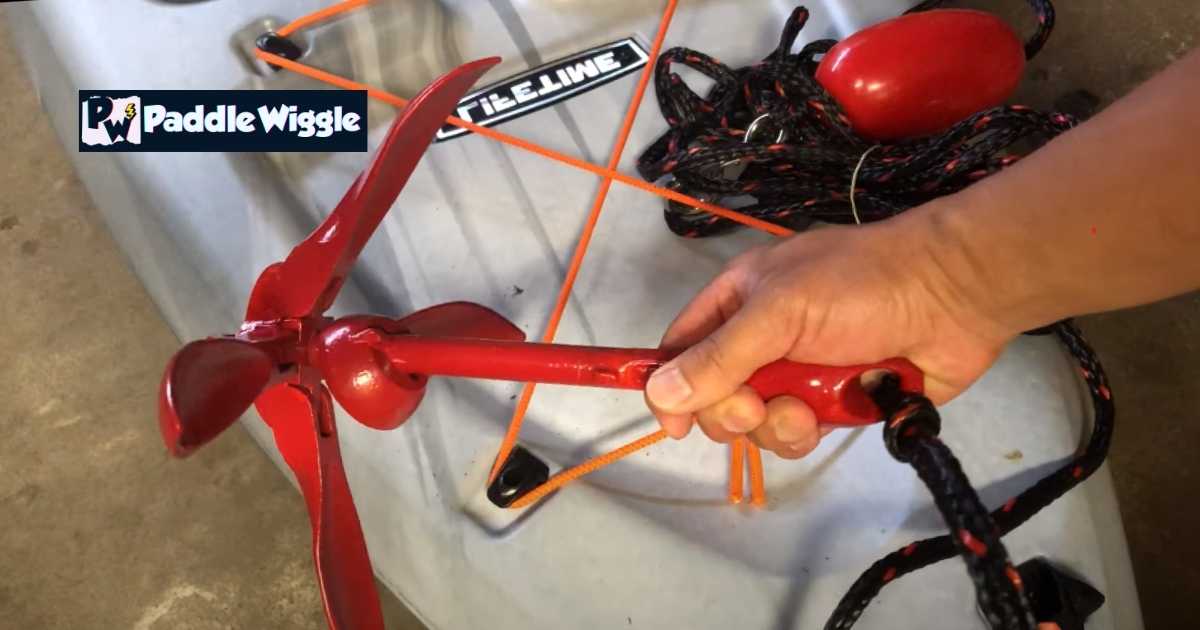

The first step in anchoring your kayak is to select the appropriate anchor. Consider the size and weight of your kayak, as well as the type of water conditions you’ll be paddling in. A small folding anchor or a grapnel anchor are popular choices for kayakers.
Step #2. Prepare The Anchor Line
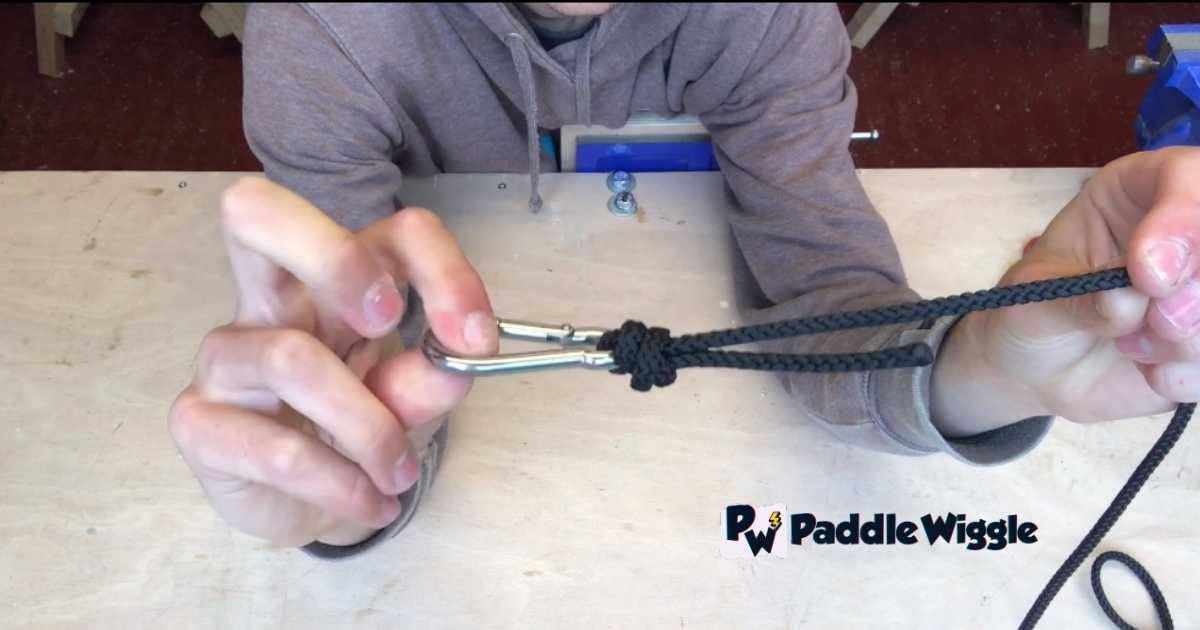

Attach a length of anchor line to the anchor. The length of the line will depend on the water depth and the distance from the kayak to the anchor point. Use a strong knot or carabiner to secure the line to the anchor, ensuring it won’t come loose under tension.
Step #3. Attach The Anchor Line To The Kayak
Securely attach the anchor line to your kayak using an anchor trolley system or anchor cleat. The anchor trolley allows you to adjust the position of the anchor line along the length of the kayak, providing versatility in anchoring positions. Use a strong knot or cleat hitch to secure the line to the kayak.
Step #4. Choose A Location
Before deploying the anchor, assess the water depth, current, wind direction, and nearby obstacles. Here are a few things that you need to consider before deploying the anchor:
– Assess the water depth, current, wind direction, and nearby obstacles.
– Choose a location where the water depth is suitable for anchoring and where the kayak will face the wind or current to minimize drift.
– Avoid anchoring in shallow areas or near underwater hazards.
Step #5. Deploy The Anchor
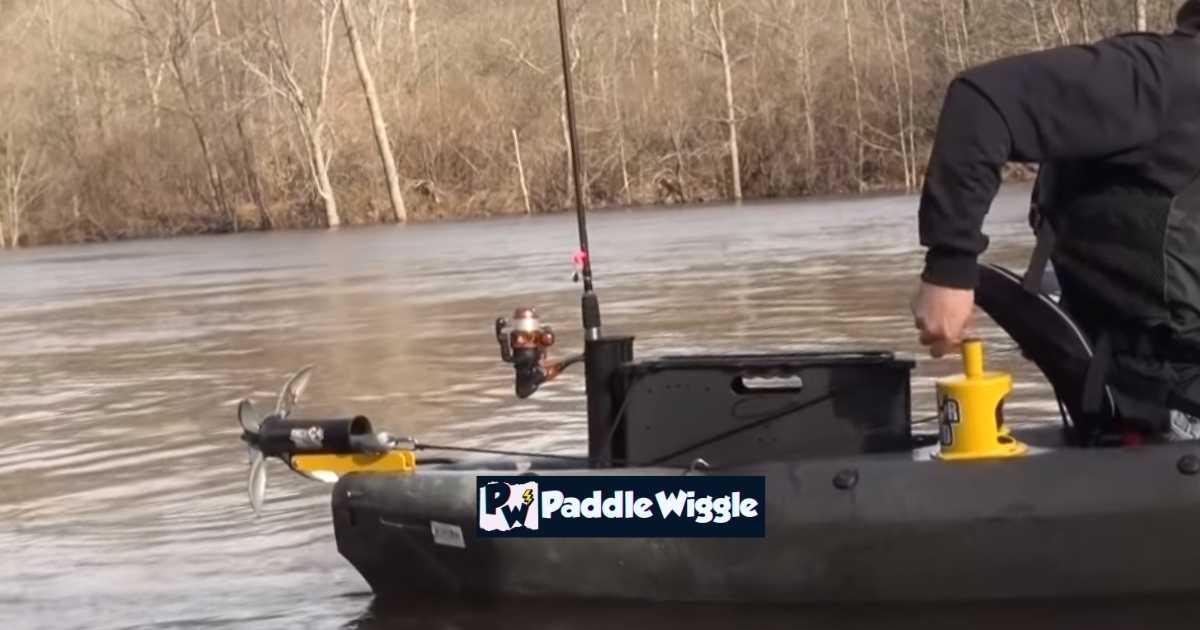

Lower the anchor over the side of the kayak, paying out enough line to reach the bottom. Allow the anchor to settle on the bottom, ensuring the flukes or grappling arms dig in securely. Keep a firm grip on the anchor line to control the descent and prevent tangling.
Step #6. Adjust Position And Tension
Use the anchor trolley system to adjust the position of the kayak as needed. By moving the anchor point forward or backward along the kayak, you can change the angle of the kayak relative to the wind or current, ensuring stability and comfort. Adjust the tension on the anchor line to keep the kayak in position without excessive strain.
Step #7. Monitor Conditions
While you’re anchored, it’s crucial to stay aware of what’s happening around you. Keep an eye on things like wind, water flow, and any boats or objects coming your way. If conditions change or you need to move, be ready to adjust your position or pull up the anchor and relocate. Being vigilant ensures your safety and helps you make the most of your kayaking experience.
Step #8. Retrieve The Anchor
When it’s time to move on, carefully retrieve the anchor by pulling in the anchor line hand over hand. Use caution to avoid tangling the line or damaging the kayak. Once the anchor is clear of the water, secure it in a designated storage area on the kayak to prevent it from shifting during paddling.
Mistakes To Avoid When Anchoring A Kayak
Anchoring your kayak can really level up your paddling experience. It gives you stability and control and makes things more convenient, especially in different water situations.
For example, you’re out on the water, fishing in a calm spot or just chilling and enjoying the view. Instead of constantly paddling to stay in one place, anchoring lets you relax and stay put, even if the wind or water is moving around you. It’s like having your own little spot in the middle of the action.
But anchoring isn’t just about dropping an anchor and hoping for the best. There’s a learning curve to it. You need to know the right techniques, pick the right gear, and steer clear of some common mistakes. Doing it right keeps you safe and makes sure it actually works like you want it to.
While anchoring a kayak can greatly enhance your paddling experience, there are several common mistakes that paddlers should be aware of to ensure safety and effectiveness:
Balancing Holding Power And Portability
Finding the perfect balance between holding power and portability is essential when selecting an anchor weight for your kayak. You want an anchor that will keep your kayak securely in place without being too cumbersome to handle. Consider the type of bottom you’ll be anchoring on – sandy or muddy bottoms require more holding power compared to rocky or weedy bottoms.
Avoiding Overly Heavy Anchors
One common mistake many kayakers make is using anchors that are too heavy for their kayaks. While a heavier anchor may offer better holding power, it can also add unnecessary weight to your kayak and affect its stability and maneuverability. It’s important to choose an anchor that is appropriate for your kayak’s size and weight capacity.
Using The Wrong Anchor
Using an anchor that is too small or lightweight for the kayak or the conditions can result in ineffective anchoring. Ensure you select an anchor appropriate for the size of your kayak, the type of bottom (sand, mud, rock), and the prevailing weather and water conditions.
Poor Anchor Attachment
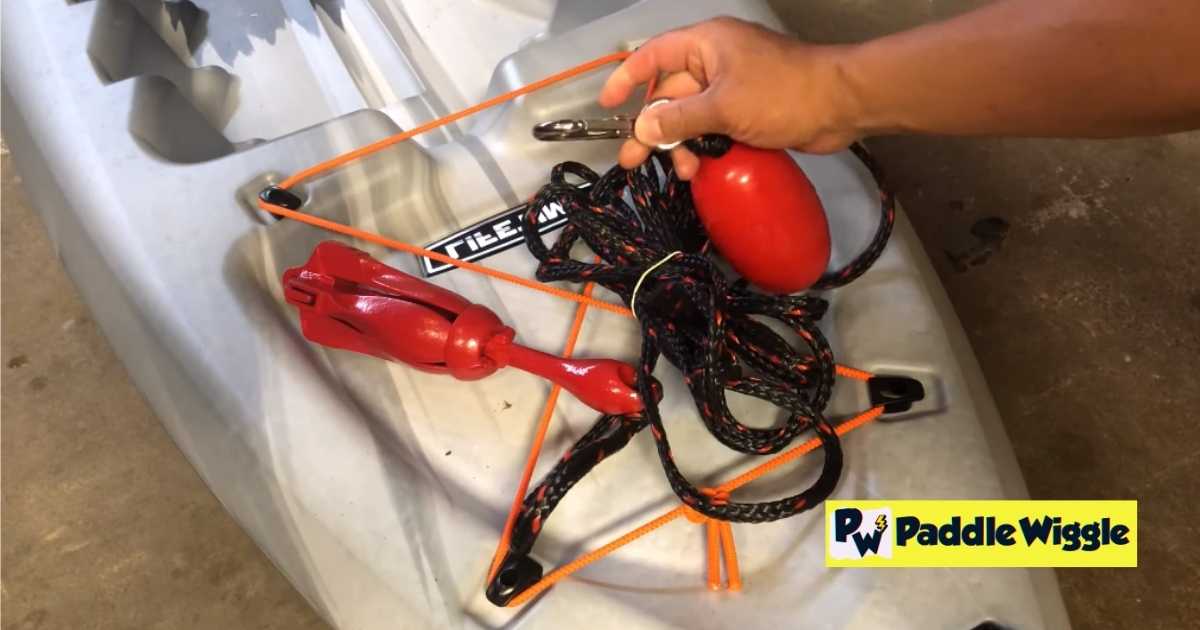

Failing to securely attach the anchor line to the kayak can cause it to come loose or the kayak to drift unexpectedly. Always use a strong knot or cleat hitch to secure the anchor line to the kayak, and double-check the attachment before deploying the anchor.
Anchoring In Unsafe Locations
When you’re anchoring your kayak, safety’s a big deal. Picking the right spot is key. Avoid shallow areas, places with hidden hazards underwater, or spots where there’s a lot of boat traffic. Check the water depth, watch out for strong currents or wind, and steer clear of obstacles nearby. Keep safety in mind to have a smooth anchoring experience.
Insufficient Anchor Line Length
Using an anchor line that is too short may not allow the kayak to anchor securely, especially in deeper water or strong currents. Ensure you use a sufficient length of anchor line to reach the bottom and provide adequate scope for the anchor to set properly.
Neglecting To Monitor Conditions
Failing to monitor changing weather, water conditions, or approaching hazards while anchored can lead to unexpected problems or dangers. Stay vigilant and keep an eye on your surroundings, adjusting your position or retrieving the anchor if conditions change.
Final Words
Anchoring your kayak is a smart move for safety and convenience on the water. It might seem simple, but it takes some know-how to do it right. You need to pick the right anchor, use it correctly, and find the best spots to anchor safely.
When done correctly, anchoring can make your kayaking experience more stable, controlled, and comfortable. But it’s important to stay alert and adjust your anchor if conditions change.
With practice, anchoring will become second nature, giving you the freedom to explore, fish, or simply relax while enjoying the beauty of nature from your anchored kayak.


